-
About
- About Listly
- Community & Support
- Howto
- Chrome Extension
- Bookmarklet
- WordPress Plugin
- Listly Premium
- Privacy
- Terms
- DMCA Copyright
- © 2010-2025 Boomy Labs

Listly by Sigma HSE UK Ltd
A UK, Sussex-based recycling company has been fined following an explosion and fire at one of their sites. Portsmouth Crown Court heard how a massive explosion occurred at the site on 3 October 2011 in Lingfield, Surrey, following the storage of print toner on site. Eight people were injured (five seriously) as a result of the explosion when toner cartridges being shredded and reprocessed.
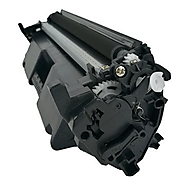
A UK, Sussex-based recycling company has been fined following an explosion and fire at one of their sites. Portsmouth Crown Court heard how a massive explosion occurred at the site on 3 October 2011 in Lingfield, Surrey, following the storage of print toner on site. Eight people were injured (five seriously) as a result of the explosion when toner cartridges being shredded and reprocessed.
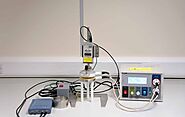
Our laboratories generate extensive electrostatic discharge and hazard testing data to aid you in identifying and reducing hazardous electrostatic risks

Our UK based combustible dust & powder testing laboratory generates data on your materials to UK, EN & ISO testing standards

Our UK based combustible dust & powder testing laboratory generates data on your materials to UK, EN & ISO testing standards
The MInimum Ignition Energy (MIE) test is conducted to determine the lowest spark energy that will ignite a powder when dispersed in air, as a dust cloud.An inductive generated spark is selected for mechanical (friction, impact and grinding) or electrical (wire short, electrical contact) spark incendivity analysis. https://sigma-hse.com/testing/dust-powder-testing/
The air over layer test is conducted to establish the onset temperature of exothermic activity of thin layers of material when exposed to elevated atmospheric temperatures. https://sigma-hse.com/testing/thermal-stability-testing/
The MInimum Ignition Energy (MIE) test is conducted to determine the lowest spark energy that will ignite a powder when dispersed in air, as a dust cloud.An inductive generated spark is selected for mechanical (friction, impact and grinding) or electrical (wire short, electrical contact) spark incendivity analysis.
Burning Behaviour is conducted to assess the behaviour (severity) of combustion propagation through a material deposit on being ignited by an external ignition source. https://sigma-hse.com/testing/dust-powder-testing/
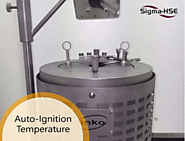
The autoignition temperature or kindling point of a substance is the lowest temperature at which it spontaneously ignites in normal atmosphere without an external source of ignition, such as a flame or spark. https://sigma-hse.com/testing/dust-powder-testing/
This test is conducted to determine the lower and upper concentration limits of flammability of chemicals having sufficient vapour pressure to form flammable mixtures in air at atmospheric pressure at a specific test temperature. https://sigma-hse.com/testing/thermal-stability-testing/
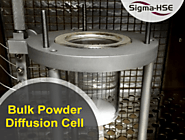
The bulk powder diffusion cell test is conducted to establish the onset temperature of exothermic activity of a material when exposed to elevated atmospheric temperatures.
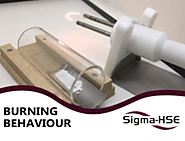
Viour is conducted to assess the behaviour (severity) of combustion propagation through a material deposit on being ignited by an external ignition source. https://sigma-hse.com/testing/dust-powder-testing/
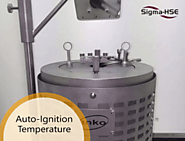
The autoignition temperature or kindling point of a substance is the lowest temperature at which it spontaneously ignites in normal atmosphere without an external source of ignition, such as a flame or spark. https://sigma-hse.com/testing/gas-vapour-testing/
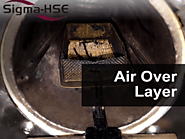
The air over layer test is conducted to establish the onset temperature of exothermic activity of thin layers of material when exposed to elevated atmospheric temperatures. https://sigma-hse.com/testing/thermal-stability-testing/
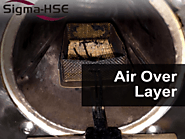
Flammability test assess whether a dust/powder will form a flammable atmosphere, supporting flame propagation, when dispersed as a dust cloud in air. It is a purely qualitative test and categorises a material into one of two groups. https://sigma-hse.com/testing/dust-powder-testing/
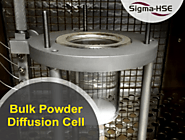
The bulk powder diffusion cell test is conducted to establish the onset temperature of exothermic activity of a material when exposed to elevated atmospheric temperatures. https://sigma-hse.com/testing/chemical-reaction-hazards/
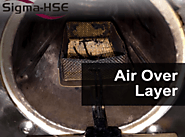
The air over layer test is conducted to establish the onset temperature of exothermic activity of thin layers of material when exposed to elevated atmospheric temperatures. https://sigma-hse.com/testing/thermal-stability-testing/
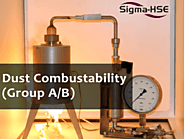
Flammability test assess whether a dust/powder will form a flammable atmosphere, supporting flame propagation, when dispersed as a dust cloud in air. It is a purely qualitative test and categorises a material into one of two groups.
https://sigma-hse.com/testing/dust-powder-testing/
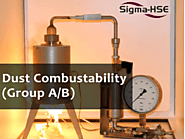
The bulk powder diffusion cell test is conducted to establish the onset temperature of exothermic activity of a material when exposed to elevated atmospheric temperatures. https://sigma-hse.com/testing/thermal-stability-testing/
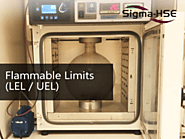
Flammable limits apply generally to vapors and are defined as the concentration range in which a flammable substance can produce a fire or explosion when an ignition source (such as a spark or open flame) is present. https://sigma-hse.com/testing/gas-vapour-testing/
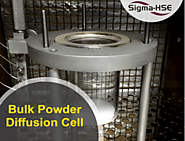
The bulk powder diffusion cell test is conducted to establish the onset temperature of exothermic activity of a material when exposed to elevated atmospheric temperatures. https://sigma-hse.com/testing/thermal-stability-testing/
Viour is conducted to assess the behaviour (severity) of combustion propagation through a material deposit on being ignited by an external ignition source. https://sigma-hse.com/testing/dust-powder-testing/
Viour is conducted to assess the behaviour (severity) of combustion propagation through a material deposit on being ignited by an external ignition source. https://sigma-hse.com/testing/dust-powder-testing/
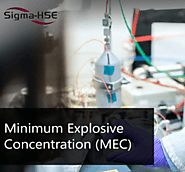
The Minimum Explosive Oxygen Concentration in the Airborne Dust of Fossil Fuels This test is conducted to determine the minimum quantity of powder dispersed in air, as a dust cloud that will ignite. https://sigma-hse.com/testing/dust-powder-testing/
Our DSEAR risk assessments include:
Full site risk assessment
Identification of dangerous substances that may apply under DSEAR
Hazardous Area Classification drawings (if required)
Advice on area signage, labelling requirements and control measures
Guidance on equipment and protective systems
Basis of Safety for each site process
A prioritised & realistic action plan to mitigate any risks
Follow-on support such as bespoke DSEAR training courses
Sigma-HSE is a fast growing organisation in the fields of health & safety and the environment, with bases in Europe, Asia and the Middle East, and active plans to e...